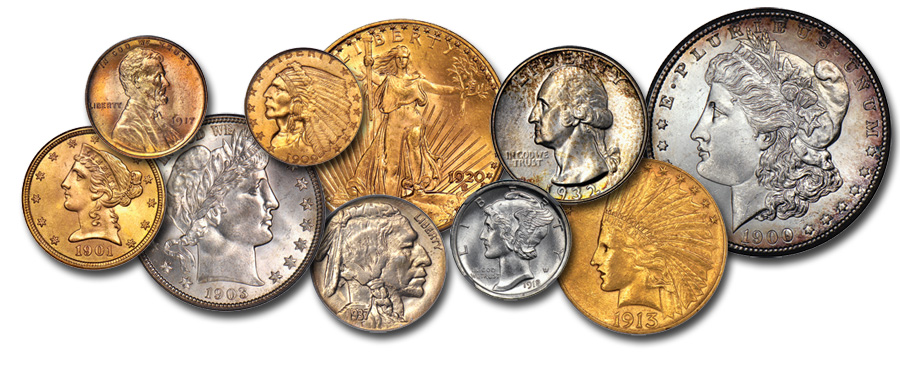
In this third of four parts, I will finish up my discussion of the silver coins in a type set of 20th-century coins (1900 to 1999). Then next week I will conclude with the gold coins.
The first half dollar is the Liberty Head type by Charles E. Barber, modeled after French coinage. These were made from 1900 through 1915. In Mint State these are the most difficult of the 20th-century silver types to obtain.
Adolph Weinman’s beautiful Liberty Walking design was introduced in 1916 and produced intermittently through 1947, a motif that just about everyone thinks is gorgeous — a numismatic favorite for a long time. Examples from the later years are inexpensive enough.
Next is the Franklin half dollar by John R. Sinnock, introduced in 1948 and produced continuously through 1963. Interestingly, when this motif was introduced there was not very much numismatic interest in it, perhaps because collectors missed the beautiful Liberty Walking design. For whatever reason, popularity of Franklin half dollars on a large scale did not occur until years later. Today they are highly desired. There are no rarities in the series making a complete set easy enough to build. For type set purposes simply select the date and mint of your choice.
The Kennedy half dollar, by Chief Engraver Gilroy A. Roberts, is next, minted in 1964 with 90% silver alloy. The price of silver rose on International markets, necessitating a change in alloy.
From 1965 through 1970 inclusive, a silver-clad alloy was used.
In 1971 silver was dropped completely and clad metal was used from that point forward, creating a new type.
The final half dollar design of the 20th century is the 1776-1976 Bicentennial half dollar, with the reverse design showing Independence Hall, essentially a copy of what was used on the reverse of the 1926 Sesquicentennial commemorative quarter eagle. These half dollars are easily obtainable today.
Next on the list are silver dollars. During the 20th century Morgan dollars were struck from 1900 through 1904 inclusive, followed by a long span of years and then again in 1921 (from slightly different dies but not generally considered as a distinct type). Examples are available easily enough.
Peace silver dollars by Anthony D. Francisci made their appearance in December 1921, the first issues being in high relief and constituting a separate type.
From 1922 intermittently to 1935, Peace dollars were made in reduced relief, easy enough to find today.
By 1971 silver dollars of earlier years were no longer seen in circulation as the price of silver had risen to the point at which many of them were melted. To satisfy the demand for Nevada gaming tables and other users, the Treasury Department launched the Eisenhower dollar, in clad metal, with a design by Chief Engraver Frank Gasparro. These were made through 1978 and are easily obtained.
A “special” Eisenhower silver dollar was also made dated 1776-1976 as part of the United States Centennial celebration and featured on the reverse an image of the Liberty Bell superimposed on the moon.
From 1979 through 1981 and then again in 1999 the Susan B. Anthony dollar, by Frank Gasparro, was created. These were expected to replace paper dollars and be more efficient in terms of productivity and cost, but the public did not take to them nor did vending machine operators adapt their devices to accept them. Accordingly, very few ever reached circulation.





